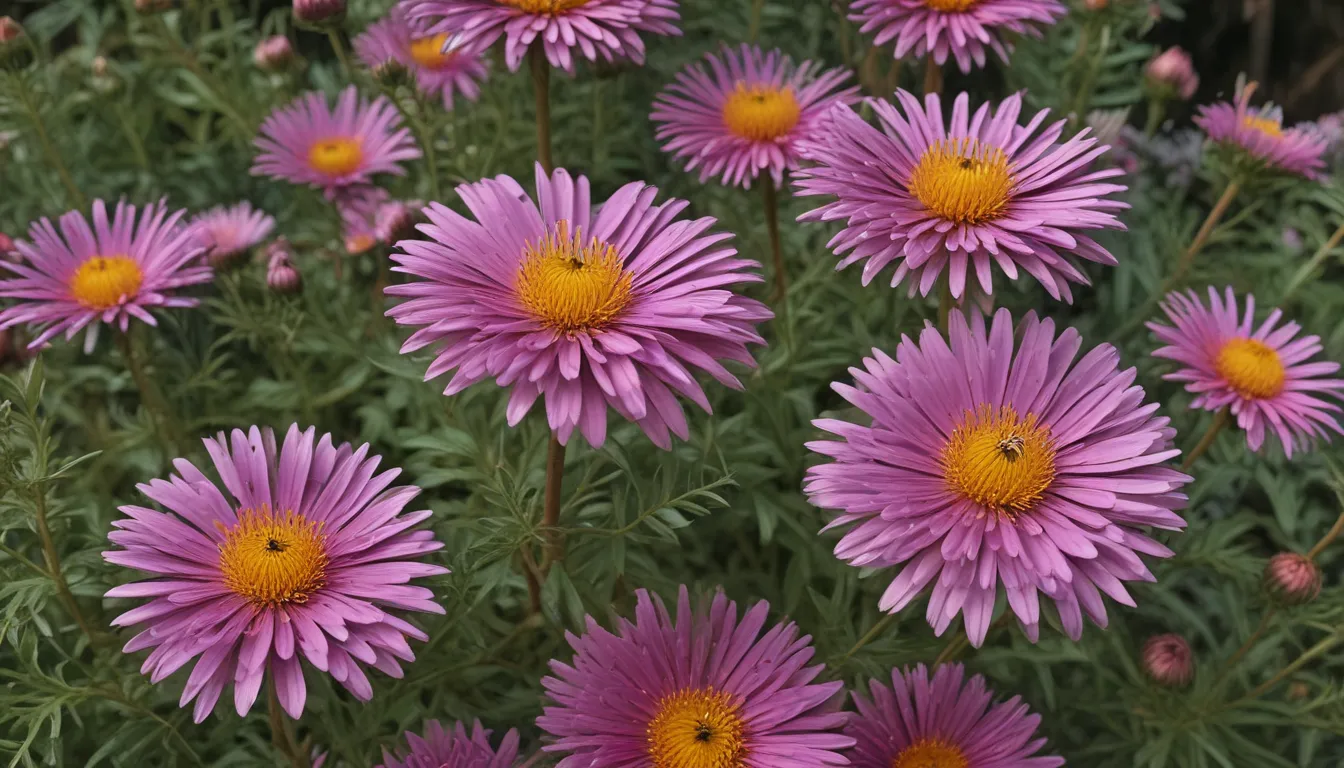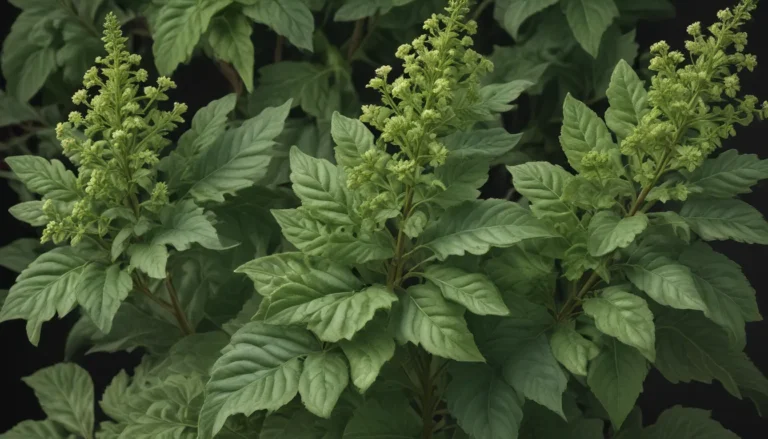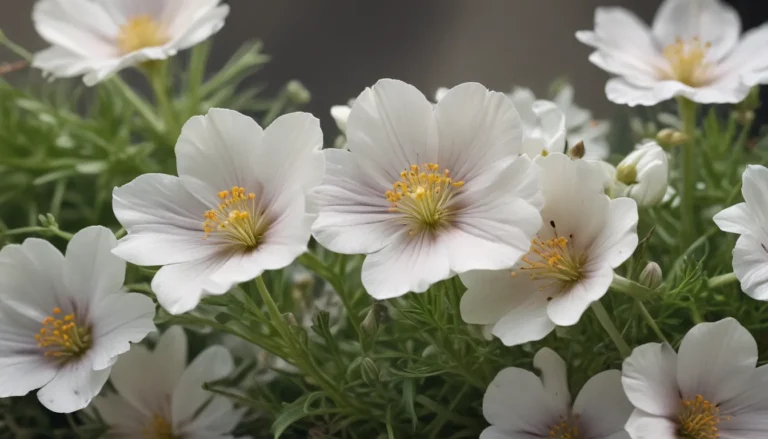The pictures we use in our articles might not show exactly what the words say. We choose these pictures to make you interested in reading more. The pictures work together with the words but don’t take their place. The words still tell you the important facts.
Are you ready to explore the enchanting world of New England Aster? This captivating plant is not just a pretty face in your garden; it holds a treasure trove of surprising facts and benefits that will surely intrigue you. From its vibrant blooms to its ecological significance, the New England Aster is a true wonder of nature that deserves your attention. Whether you're an avid gardener, a nature lover, or simply curious about plants, this article will take you on a journey through 12 surprising facts about New England Aster, uncovering its beauty, versatility, and unique features.
Blooming Beauty of New England Aster
The New England Aster, scientifically known as Symphyotrichum novae-angliae, is renowned for its dazzling display of vibrant blooms. With a palette of colors ranging from purple and pink to white, these flowers add a splash of color to any garden or landscape, creating a picturesque scene that delights the senses.
A Haven for Pollinators
One of the most remarkable traits of the New England Aster is its magnetic attraction to pollinators such as bees, butterflies, and hummingbirds. The nectar-rich flowers serve as a valuable food source for these beneficial creatures, playing a vital role in supporting local ecosystems and promoting biodiversity.
Embracing its Native Roots
Hailing from North America, particularly the eastern and central regions of the continent, the New England Aster thrives in various habitats, including meadows, prairies, and roadsides. Its adaptability to different environments showcases its resilience and versatility as a native wildflower.
A Late-Blooming Spectacle
Unlike many flowers that fade away in late summer, the New England Aster takes center stage with its late blooming period extending through fall. This extended blooming season offers a burst of color when other plants may be winding down, making it a standout attraction in any garden.
Towering Beauty and Strength
Standing tall at heights ranging from 3 to 6 feet, the New England Aster commands attention with its sturdy stems and bushy foliage. Its impressive stature adds a vertical dimension to gardens and floral arrangements, creating a striking visual impact.
Harnessing Healing Powers
The New England Aster has a rich history of medicinal uses among Native American tribes. From treating respiratory ailments and digestive issues to soothing skin irritations, this plant's roots were brewed into a healing tea with therapeutic properties that have been valued for generations.
Resilience in Adversity
Known for its resilience and drought tolerance, the New England Aster can withstand harsh environmental conditions, making it an ideal choice for gardens in regions with limited water resources. Its ability to thrive in challenging circumstances highlights its adaptability and strength.
Cultural Reverence and Symbolism
In certain Native American cultures, the New England Aster holds symbolic significance associated with wisdom, patience, and healing. This plant is often incorporated into spiritual ceremonies and rituals, reflecting its profound cultural importance and reverence.
Enduring Beauty Year after Year
As a perennial plant, the New England Aster returns year after year, delighting gardeners with its timeless beauty and longevity. This enduring nature makes it a cost-effective choice for garden enthusiasts, allowing them to enjoy its blooms season after season without the need for replanting.
Butterfly Magnetism
Butterflies are particularly drawn to the New England Aster, making it a favored plant in butterfly gardens. The nectar-rich flowers provide a vital food source for these delicate creatures and serve as a natural habitat for their larvae, fostering a harmonious relationship with nature.
Simple Pleasures of Growing
Even novice gardeners can experience success with the New England Aster, thanks to its easy-to-grow nature. Thriving in well-drained soil and requiring minimal care once established, this low-maintenance plant welcomes gardeners of all skill levels to enjoy its beauty with ease.
Ecological Harmony in Gardens
Beyond its ornamental appeal, the New England Aster offers ecological benefits that contribute to a thriving ecosystem. From preventing soil erosion to providing shelter and food for wildlife, this plant plays a vital role in supporting the biodiversity of local environments, making it a valuable addition to gardens.
In conclusion, the New England Aster stands as a testament to the wonders of nature, captivating us with its beauty, resilience, and cultural significance. Whether you're admiring its vibrant blooms, observing its interactions with pollinators, or appreciating its ecological contributions, this native wildflower is a multifaceted gem that enriches our lives and connects us to the natural world.
Embrace the Splendor of New England Aster
The New England Aster invites you to embark on a journey of discovery and appreciation for its remarkable qualities. As you gaze upon its vibrant blooms and witness its interactions with pollinators, take a moment to reflect on the beauty and significance of this captivating plant. Whether you're cultivating a garden oasis or preserving native plant diversity, the New England Aster offers a wealth of benefits and joys that enrich our lives and surroundings.
FAQs About New England Aster
Q: How tall does the New England Aster grow?
A: The New England Aster typically reaches heights of 2 to 6 feet, making it a majestic presence in gardens.
Q: When does the New England Aster bloom?
A: The New England Aster blooms from late summer to early fall, gracing gardens with its colorful display from August to October.
Q: Does the New England Aster require extensive maintenance?
A: The New England Aster is a low-maintenance plant that thrives in well-drained soil and full sun, requiring minimal care with regular watering and deadheading to prolong its blooming period.
Q: Can the New England Aster attract pollinators?
A: Yes, the New England Aster is a magnet for pollinators such as bees, butterflies, and hummingbirds, drawing them in with its vibrant and nectar-rich flowers.
Q: Are there any medicinal uses for the New England Aster?
A: The New England Aster has a history of medicinal use, with Native Americans using it to treat various ailments, including respiratory issues, digestive problems, and skin irritations.
Q: Does the New England Aster spread easily?
A: The New England Aster can spread through self-seeding, requiring monitoring of its growth to prevent unwanted seedlings from taking over.
As you delve deeper into the world of native plants and explore the wonders of nature, the New England Aster stands as a beacon of beauty, resilience, and ecological significance. Embrace the splendor of this remarkable plant and let its vibrancy enrich your garden and your life.






